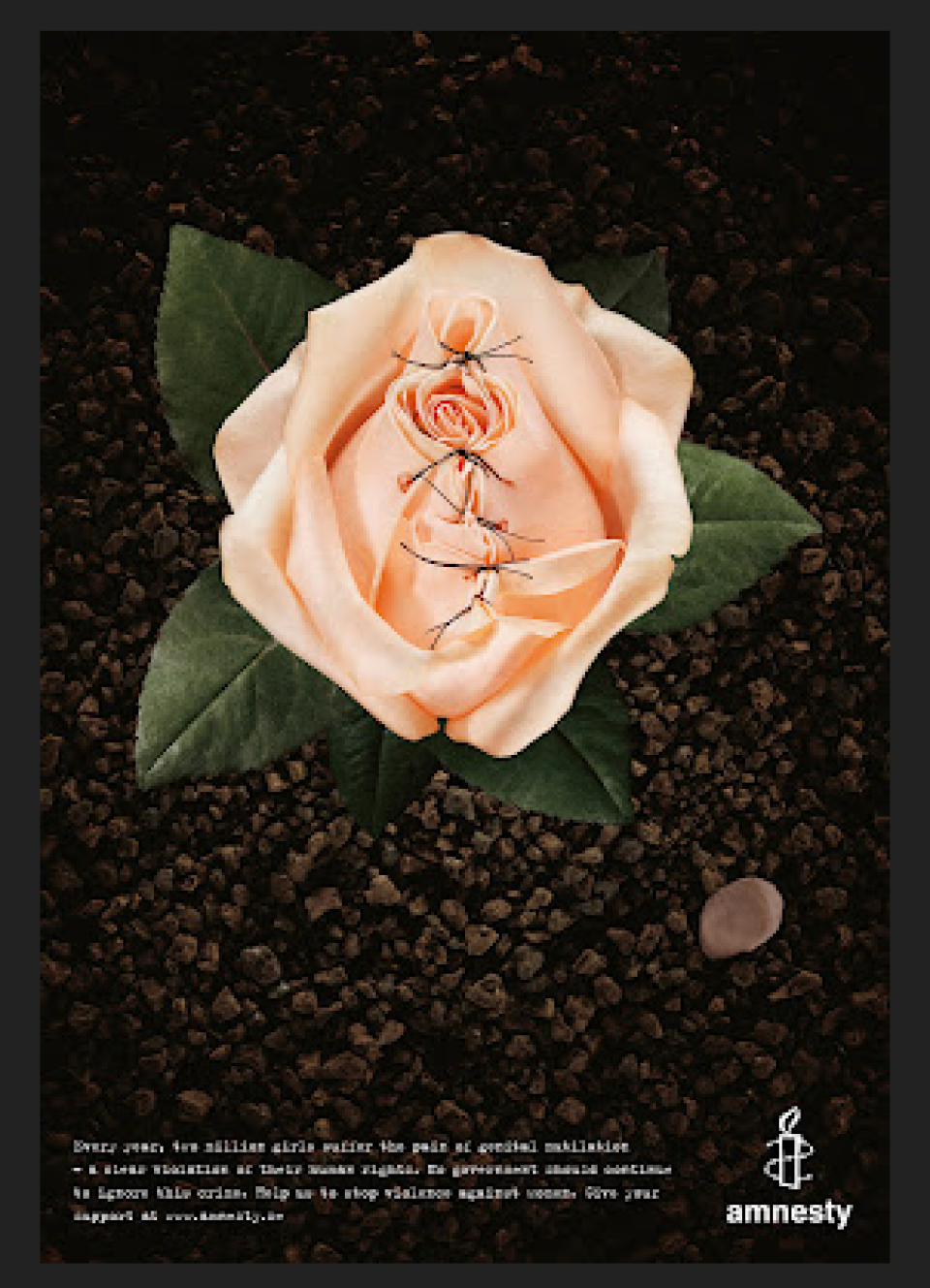
Images of amazing infographics and heart-wrenching campaigns circled us in the recent "Using information design in advocacy for women's rights" workshop at AWID Forum 2012. Maya and Faith from Tactical Tech led us in a provocative session, where small groups focussed on just one of six questions about each "ad" or campaign image as they toured the room. Questions to tackle included: who did the team think the ad was geared at, what did they learn, what would they change about the ad, etc.
The diversity of groups made the exercise all the more interesting, as we learned what was clear for one participant didn´t fit the other's cultural understanding at ALL. No doubt amongst any of us about the importance of defining audience when designing a campaign!
Infographics were the hardest to digest for my group, there was simply way too much info to look at on a poster. Such graphics online can be very effective, however, as one can toggle the text to fit visibility needs and therefore focus on the info. But infographics are a breed unto themselves and don't appeal to everyone.
I was particularly impressed by Exxon Secrets which illustrates money Exxon has channeled to climate change research.

Just take a look at the very effective “Global Warming Debate” poster and it becomes clear how media corporations are likely conspiring with groups such as Exxon Foundation! I love such examples because they show what can be done if we begin to crunch together data online and do research to expose the complicity between our public official/press/science and industry, forcing transparency and demanding accountability.

The session was packed and time was limited, but what was missing for me was more debate about effective feminist and women's rights messaging – within campaigns relevant to specific women's rights, but also we need to reflect more on feminist values influencing the way we communicate our information.
I'm not saying there is one feminist “way”; ideas would be as diverse as feminists are, which is why having that chance to debate at an AWID forum would be quite rich. Perhaps the session was too short to get into this level of debate but I would have loved it if one of the small groups had at least been asked to do a gendered analysis of the images. Of course, with AWID-forum-feminists doing the touring it was also a bit implicit.
Anyone interested in social transformation hopefully is thinking about how to be effective in their messaging without perpetuating gender stereotypes, agression, women as victims, etc. Because of the gendered, patriarchal societies which we live in, stereotypes or subliminal sexualised violence can serve as triggers to drive messages home. Does that mean we should take advantage?
An Amnesty International ad featuring a pink rose stitched up with black coarse thread was cited by many as THE most effective ad out of the 30+ posters, for its simplicity and clear message. There was no question that it was a poster against female genital mutilation and most even felt a visceral response upon seeing it. Other participants were keenly troubled by such an ad, considering it a trite metaphor and even misleading. I looked up the ad online and found out there has been tremendous debate among feminists and activists There is no doubt it is provocative – the fact that it can elicit action is why for many it was a winning image (and check out the campaign!).

Another one, obscure for many, was ironic and troubling at the same time. It relied on audience knowledge of “male” and “female” electronics to graphically communicate female infanticide. The message was lost on many, but they did cite the agressive and phallic nature of the image, despite not “getting it”. Does that mean it was effective in the end? (I thought it was quite wry, but I'm a big fan of Gender Changers)
It's this sort of debate, about how to be feminist and “market” messages at the same time, that has really challenged many of us in a world where you can't even use the F-word if you are trying to appeal to a broader audience. Up-fronting feminism as a term and concept might be self-defeating in an ad campaign, but should we appeal to and perpetuate stereotypes for a larger cause? And before giving a purist response, try doing a market or audience test like Tactical Tech did so effectively with those small group questions and fantastic visuals.
Check out their info design guide
Responses to this post
Well, sometimes the name of a movement is necessary to give it validation, or to point to possible ways to take action, etc. But I agree it is not always necessary. I didn’t mean to imply that we should have a rubber stamp on posters that screams out “feminist” – there is no one feminist movement, nor are feminist values one-size-fits-all – they will vary dramatically according to country, culture, class, race, religion, age, history, etc. But I do think feminist reflection is necessary when developing social justice ad campaigns – do we want to perpetuate stereotypes or transform them? And what if perpetuation of some stereotypes means that there is mass interest in the specific cause we are trying to achieve, because people respond to stereotypes, unfortunately. I think we need to push ourselves to see how ads can have that “mass” (or even sex) appeal as creatively as possible, without minimising whatever ones’ feminist values are. Doesn’t mean we have to include the F-word in the ad, but we may not want to portray women in subjugated positions, or as victims of violence just because people may respond better to such an appeal.
I’m not really sure why the name of the movement needs to be made explicit in an ad campaign or even a campaign in general? I don’t see how it is useful in any way or adds to information about a particular human rights issue.
- Add new comment
- 13384 views






Add new comment